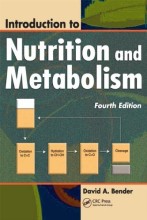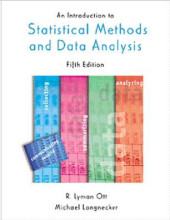Summary: Introduction To Nutrition And Metabolism | 9781420043129 | David A Bender
- This + 400k other summaries
- A unique study and practice tool
- Never study anything twice again
- Get the grades you hope for
- 100% sure, 100% understanding
Read the summary and the most important questions on Introduction to nutrition and metabolism | 9781420043129 | David A. Bender.
-
1 Why eat?
This is a preview. There are 1 more flashcards available for chapter 1
Show more cards here -
1.2 Metabolic fuels
-
What are the dietary sources of metabolic energy (fuels)?
Carbohydrates, fats, protein and alcohol.
-
1.2.2 The need for protein
-
What causes the continual loss of protein from the body? (At least two)
1. Hair
2. Shed skin cells
3. Enzymes
4. Other protein secreted from the gut
-
1.3.1 Hunger and satiety-short term control of feeding
-
What part of the brain stimulates us to eat and stop eating?
Hunger: Lateral hypothalmus through neurons that uses neuropeptide Y as transmitter.
Satiety: Ventro-medial hypothalamus through neurons that use pro-opiomelanocortin (POMC)
-
1.3.2 Long term control of food intake and energy expenditure
-
How does leptin act to increase energy expenditure and loss of adipose tissue?
1. Increased expression of uncoupling proteins in adipose tissue and muscle;
resulting in relatively uncontrolled oxidaion of metabolic fuel.
2. Increased activity of lipase in adipose tissue;
resulting in a breakdown of triacylglycerol reserves and release of nonesterified fatty acids, which are either oxidized or re esterified in liver/transpored to adipose tissue; costing energy.
3. Decreased expression of acetyl CoA carboxylase in adipose tissue;
decreasing both syntheses and increased oxidation of fatty acids.
4. Increased apoptose in adipose tissue;
reducing availability storing fat.
-
1.3.3 Appetite
-
What are the five basic tastes the tongue can distinguish?
1. Salt
2. Savory
3. Sweet
4. bitter
5. Sour
NB: Also the ability to taste fat.
-
When do we response in sensitivity for salt (sodium)?
In a response to the state of sodium balance in the body, the active salt receptors will increase at times of sodium depletion.
-
Why is the taste of savoriness important to us?
Largely due to the presence of free amino acids in food and permits detection of protein-rich foods
-
What can we detect with the taste of sweetness?
Carbohydrates (energy sources)
-
Why are sourness and bitterness an unpleasant sensation?
Because many toxins occur in food that have a bitter and sour flavor.
-
2 Enzymes and metabolic pathways
-
On what do all metabolic processes depend?
Reactions between molecules, with breaking covelant bonds, forming others and yielding compounds from starting material.
- Higher grades + faster learning
- Never study anything twice
- 100% sure, 100% understanding
Topics related to Summary: Introduction To Nutrition And Metabolism
-
Enzymes and metabolic pathways - Chemical reactions: Breaking and making covalent bonds
-
Enzymes and metabolic pathways - Enzymes
-
Enzymes and metabolic pathways - Factors affecting enzyme activity
-
The role of ATP in metabolism
-
Digestion and absorption - Digestion and absorption of carbohydrates - The classification of carbohydrates
-
Digestion and absorption - Digestion and absorption of carbohydrates - Carbohydrate digestion and absorption
-
Digestion and absorption - Digestion and absorption of fats
-
Energy nutrition - the metabolism of carbohydrates and fats - Energy-yielding metabolism

































